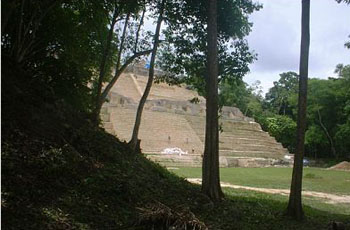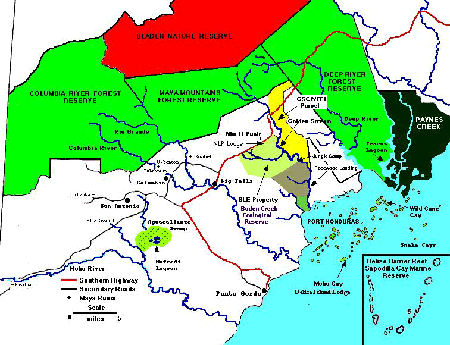 |
||
Overview Featured Research Publications
|
Enhancing Collaboration for Conservation and Development in Southern Belize
A Master's Project completed for the School of Natural Resources & Environment, University of Michigan
Abstract
Four case studies were selected and analyzed: the Maya Mountain Marine Area Transect, the Toledo Watershed Association, the Golden Stream Corridor, and the Bladen Management Consortium. The research team disaggregated these case studies to understand the factors that constrain and promote collaboration, and to identify opportunities for building on existing multi-stakeholder conservation and development initiatives in the Toledo District and beyond. Analysis of the case studies revealed that lack of trust among stakeholders, differing visions and strategies, conflict and competition, resource constraints, power and politics, organizational barriers, and community related constraints present challenges to collaboration in the District. Nonetheless, when collaboration does take place it is because of the power of existing relationships, political support, potential for joint gains, shared concerns, and an interest in moving forward. While collaborative resource management poses challenges, it holds promise as an effective means to integrate complex interests and goals into decisions regarding conservation and economic development.
The project is available in PDF Format . Click here to download the entire analysis in a complete document (note that this is a large file).
The analysis is also available in individual chapters:
Getting Adobe Acrobat Reader for PDF Files
|
|
Home | Site Map | Search | © 2009 Ecosystem Management Initiative. Terms of Use

 Like many places in the world, Belize is exploring ways to balance the sometimes complementary and sometimes conflicting objectives of economic development and natural resource conservation. Collaboration among individuals and organizations is increasingly used to resolve natural resource conflicts and to facilitate integrated conservation and development at an ecosystem scale. A team of graduate students from the School of Natural Resources and Environment at the University of Michigan conducted field research in the Toledo District of Belize to develop an understanding of collaborative processes in a Belizean context. The research team interviewed more than 60 individuals involved in conservation and development, including key government ministers and agency personnel, NGO staff, community leaders, and representatives from the private sector.
Like many places in the world, Belize is exploring ways to balance the sometimes complementary and sometimes conflicting objectives of economic development and natural resource conservation. Collaboration among individuals and organizations is increasingly used to resolve natural resource conflicts and to facilitate integrated conservation and development at an ecosystem scale. A team of graduate students from the School of Natural Resources and Environment at the University of Michigan conducted field research in the Toledo District of Belize to develop an understanding of collaborative processes in a Belizean context. The research team interviewed more than 60 individuals involved in conservation and development, including key government ministers and agency personnel, NGO staff, community leaders, and representatives from the private sector.